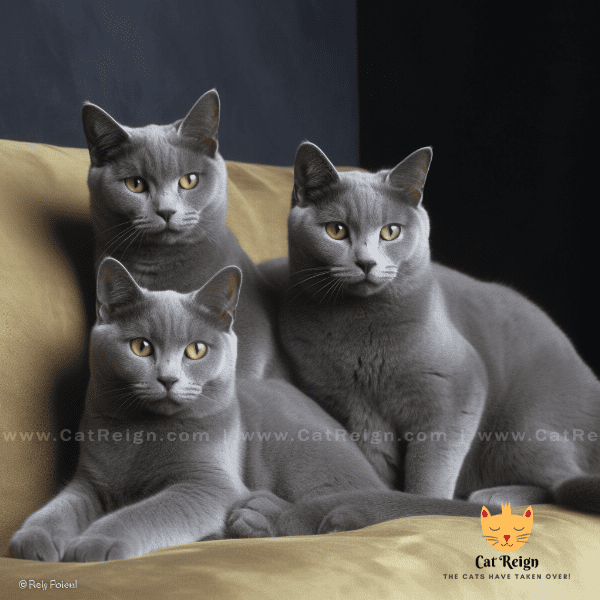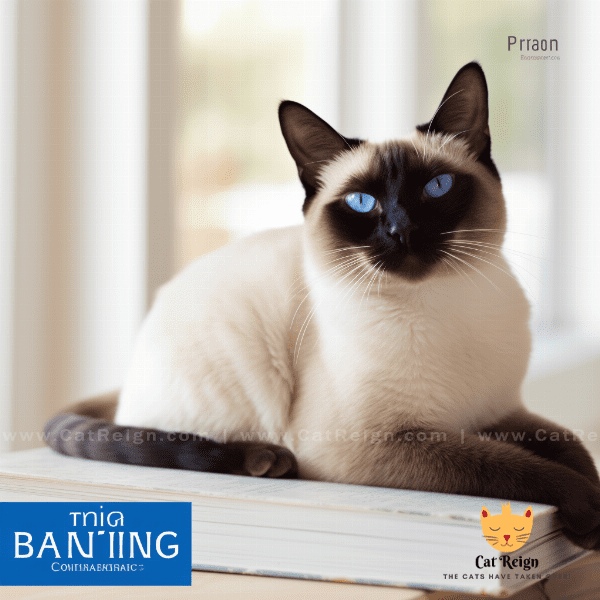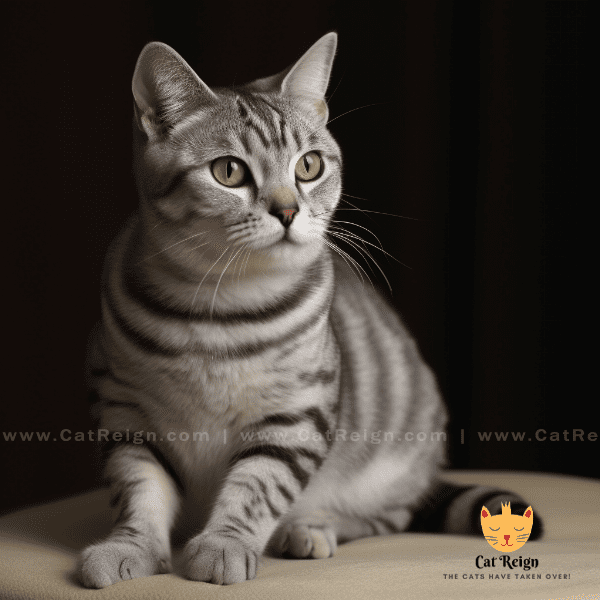Table of Contents
History of Chartreux Cats
The Chartreux is an ancient breed that originated in France. The exact origin of the Chartreux cat is not known, but they are believed to have been brought to France by crusaders.
Arrival in France
According to one theory, the Chartreux cat was brought to France by crusaders in the 12th century. It is believed that the monks at the Grande Chartreuse monastery in the French Alps took a liking to the cats and began to breed them. The cats were prized for their hunting abilities and were kept as working cats to control rodents in the monastery.
Recognition as a Breed
The Chartreux cat was not officially recognized as a breed until the early 20th century. In 1925, the first Chartreux was exhibited at a cat show in France. The breed was recognized by the French Cat Fancy in 1939.
Near Extinction
During World War II, the Chartreux cat nearly went extinct. Many cats were killed during the war, and the breed was not actively bred. After the war, breeders worked to restore the breed, and the Chartreux cat was eventually saved from extinction.
Modern Day
Today, the Chartreux cat is a popular breed around the world. They are known for their calm and gentle temperament, as well as their striking blue-gray coat. While they are no longer used as working cats, they make excellent companions for families and individuals alike.
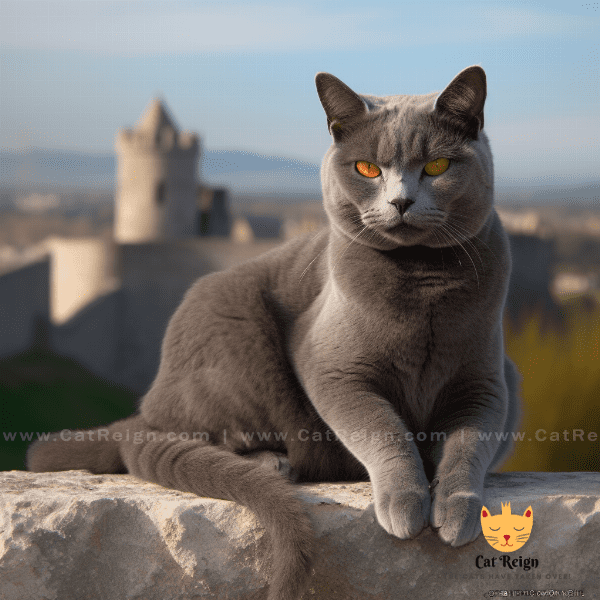
Physical Characteristics
The Chartreux cat is a medium-sized cat with a muscular build and a distinctive blue-gray coat.
Body Type
Chartreux cats have a broad, rounded head with large, expressive eyes that range from gold to copper in color. They have a short, broad nose and a strong, muscular body with a deep chest and broad shoulders. The legs are sturdy and well-muscled, and the paws are round and compact.
Coat
The Chartreux’s most distinctive feature is its thick, plush coat, which is blue-gray in color and has a woolly texture. The coat is water-resistant and designed to keep the cat warm in cold weather. The fur around the neck and cheeks is thicker and softer than the rest of the coat, giving the cat a distinctive “smiling” appearance.
Size
Chartreux cats are medium-sized cats, typically weighing between 8 and 12 pounds. They are a well-proportioned breed, with males being slightly larger than females.
Health
The Chartreux cat is generally a healthy breed with no major health issues. However, as with all cats, they can be prone to certain health problems, such as dental issues, obesity, and urinary tract infections. It’s important to schedule regular check-ups with a veterinarian to ensure that your Chartreux is healthy and happy.
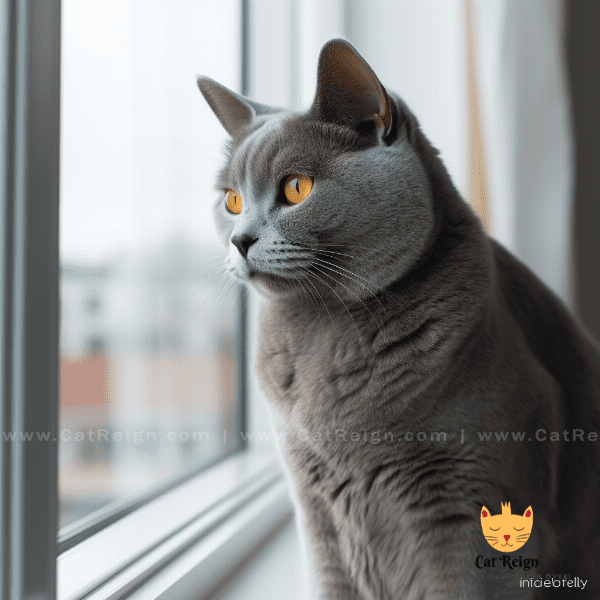
Personality Traits
The Chartreux cat is known for its calm and affectionate personality, making it a wonderful companion for families and individuals alike.
Temperament
Chartreux cats are gentle and loving, but they also have a playful and mischievous side. They enjoy spending time with their human companions and will often follow them around the house. They are not particularly vocal and are known for their quiet, chirping meows.
Affectionate
Chartreux cats are very affectionate and enjoy cuddling and being close to their human companions. They are often referred to as “lap cats” because of their love of snuggling up on laps for a nap or a good cuddle. They are also known for their head-butting, which is their way of showing affection.
Intelligence
Chartreux cats are intelligent and curious, and they enjoy playing games and solving puzzles. They are quick learners and can be trained to do tricks or respond to commands. They also enjoy interactive toys and games that stimulate their minds and keep them entertained.
Independent
While Chartreux cats enjoy spending time with their human companions, they are also independent and can entertain themselves for hours on end. They are not particularly needy and are happy to have some alone time to relax and recharge.
Overall, the Chartreux cat is a wonderful companion with a loving and playful personality that will bring joy and happiness to any household.

Chartreux Cat Care
Caring for a Chartreux cat involves providing a healthy and stimulating environment, regular grooming, and proper nutrition.
Diet and Nutrition
The Chartreux cat should be fed a high-quality diet that meets their nutritional needs. It’s important to monitor their food intake and make sure they don’t become overweight, as obesity can lead to health problems such as diabetes and heart disease. Consult with a veterinarian to determine the best diet for your Chartreux and how much to feed them based on their weight and activity level.
Exercise and Playtime
Chartreux cats are active and playful, and they require regular exercise and playtime to stay happy and healthy. Providing interactive toys and games, such as puzzle feeders and laser pointers, can help keep your Chartreux entertained and mentally stimulated. Additionally, providing perches or cat trees can give your Chartreux a place to climb and play.
Health Checkups
Regular checkups with a veterinarian are important to ensure that your Chartreux is healthy and happy. Vaccinations and parasite prevention should be kept up to date, and any health concerns should be addressed promptly.
By providing proper nutrition, regular grooming, exercise and playtime, and routine health checkups, you can help ensure that your Chartreux cat lives a long and healthy life.

Diet and Nutrition
Feeding your Chartreux cat a well-balanced, nutritious diet is essential for their health and well-being.
Choosing the Right Food
When choosing food for your Chartreux cat, it’s important to look for a high-quality cat food that is appropriate for their age, weight, and activity level. Wet food, dry food, or a combination of both can be fed depending on your cat’s preference and needs. Avoid feeding your Chartreux cat table scraps or human food, as these can be harmful to their health.
Portion Control
Portion control is important to prevent obesity, which can lead to health problems such as diabetes, heart disease, and joint problems. Follow the feeding guidelines on the food packaging and adjust the amount of food based on your cat’s weight and activity level. If you are unsure about how much to feed your Chartreux cat, consult with a veterinarian.
Feeding Schedule
It’s recommended to feed your Chartreux cat two to three small meals per day, rather than one large meal. This can help prevent overeating and aid in digestion. Fresh water should always be available, and the water bowl should be cleaned and refilled regularly.
Treats
Treats should be given in moderation and should not make up a large portion of your Chartreux cat’s diet. Look for low-calorie treats that are made with high-quality ingredients, and avoid treats that contain fillers or artificial additives.
By choosing the right food, controlling portions, feeding on a schedule, and providing appropriate treats, you can help ensure that your Chartreux cat maintains a healthy weight and enjoys good overall health.
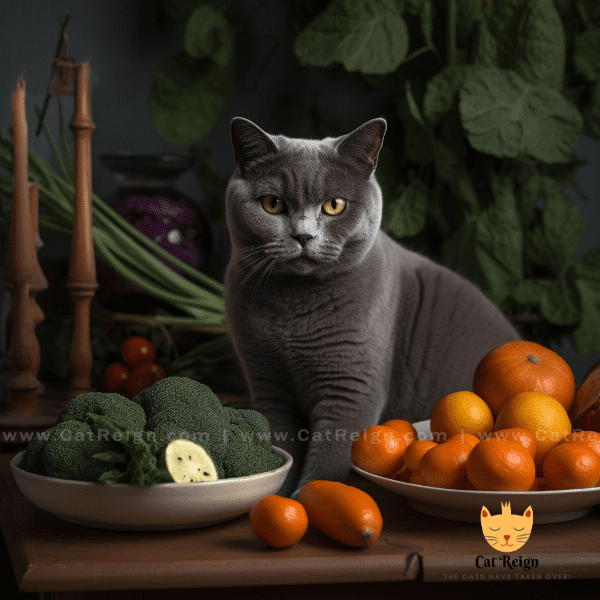
Health Issues
While the Chartreux cat is generally a healthy breed, there are some health issues that they may be prone to.
Dental Issues
Chartreux cats can be prone to dental issues such as periodontal disease and tooth decay. Regular dental checkups and cleanings can help prevent these issues, and providing dental treats or toys can help promote good oral health.
Urinary Tract Infections
Urinary tract infections (UTIs) can be a problem for Chartreux cats, especially in males. Symptoms of a UTI may include frequent urination, difficulty urinating, or blood in the urine. UTIs should be treated promptly to prevent more serious health problems.
Obesity
As with all cats, Chartreux cats can be prone to obesity, which can lead to health problems such as diabetes, heart disease, and joint problems. Maintaining a healthy weight through proper diet and exercise is essential for their overall health and well-being.
Hypertrophic Cardiomyopathy
Hypertrophic cardiomyopathy (HCM) is a heart condition that can affect Chartreux cats. It is a genetic condition that causes thickening of the heart muscle, which can lead to heart failure. Breeding programs have been developed to reduce the incidence of HCM in Chartreux cats.
Regular checkups with a veterinarian can help identify and address any health concerns in your Chartreux cat. By providing proper dental care, monitoring for UTIs, maintaining a healthy weight, and being aware of genetic health issues, you can help ensure that your Chartreux cat enjoys good overall health.
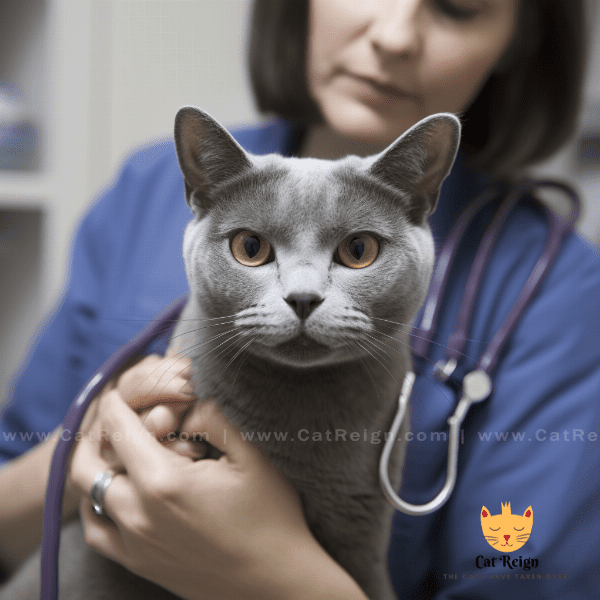
Training Chartreux Cats
Chartreux cats are intelligent and curious, and they can be trained to do tricks or respond to commands.
Positive Reinforcement
Positive reinforcement is an effective training method for Chartreux cats. This involves rewarding your cat for desired behaviors, such as using the litter box or coming when called. Rewards can include treats, praise, or playtime.
Clicker Training
Clicker training is a popular training method that involves using a clicker to signal to your cat when they have done something correctly. This method can be used to train a variety of behaviors, such as sitting or coming when called. Clicker training is a positive and effective way to train your Chartreux cat.
Leash Training
Leash training can be a fun and rewarding activity for Chartreux cats, but it’s important to start slowly and be patient. Begin by introducing your cat to the leash and harness in a familiar and comfortable environment, such as inside the house. Gradually move outside and allow your cat to explore and get used to the new surroundings.
Discouraging Bad Behavior
If your Chartreux cat exhibits bad behavior, such as scratching furniture or jumping on counters, it’s important to discourage these behaviors in a positive and effective way. This can be done by redirecting your cat’s attention to a toy or scratching post, or by providing a spray of water as a deterrent.
By using positive reinforcement, clicker training, and leash training, you can teach your Chartreux cat new behaviors and strengthen your bond with them. With patience and consistency, you can help your Chartreux cat become a well-behaved and happy companion.

Playtime and Exercise
Providing your Chartreux cat with plenty of playtime and exercise is essential for their physical and mental well-being.
Interactive Toys
Interactive toys, such as puzzle feeders and laser pointers, can provide mental stimulation and exercise for your Chartreux cat. These toys can help satisfy their natural hunting instincts and keep them entertained.
Cat Trees and Perches
Providing your Chartreux cat with a cat tree or perch can give them a place to climb, play, and relax. These structures can also provide exercise and help keep your cat’s claws healthy and strong.
Playtime with Humans
Chartreux cats enjoy playing with their human companions, and this can be a great way to bond with your cat while providing exercise and mental stimulation. Activities such as playing with a feather wand or tossing a toy can be fun for both you and your cat.
Outdoor Playtime
While Chartreux cats can be indoor cats, providing them with supervised outdoor playtime can provide additional exercise and mental stimulation. It’s important to ensure that your outdoor space is safe and secure, and to supervise your cat at all times.
By providing interactive toys, cat trees and perches, playtime with humans, and outdoor playtime, you can help ensure that your Chartreux cat stays happy and healthy. Remember to always monitor your cat’s activity level and adjust their playtime and exercise routine as needed.

Grooming Chartreux Cats
Regular grooming is important for maintaining the health and appearance of your Chartreux cat.
Brushing
Chartreux cats have a dense, plush coat that requires regular brushing to prevent matting and keep it looking healthy and shiny. Weekly brushing with a slicker brush or comb is recommended, paying special attention to the fur around the neck and cheeks, which is thicker and softer than the rest of the coat.
Bathing
Chartreux cats generally do not require frequent baths, as their thick coat helps to keep them clean. However, if your cat becomes dirty or develops an odor, a bath may be necessary. Use a cat-specific shampoo and rinse thoroughly to avoid leaving any residue.
Nail Trimming
Regular nail trims are important for your Chartreux cat’s health and well-being. Overgrown nails can cause discomfort or even health problems such as infections. Use a cat-specific nail clipper and be careful not to cut into the quick, which can cause bleeding and pain.
Dental Care
Dental care is an important aspect of grooming for Chartreux cats. Regular dental checkups and cleanings can help prevent dental issues such as periodontal disease and tooth decay. Additionally, providing dental treats or toys can help promote good oral health.
By providing regular grooming, including brushing, bathing, nail trimming, and dental care, you can help ensure that your Chartreux cat looks and feels their best. Additionally, grooming can be a great way to bond with your cat and keep them healthy and happy.
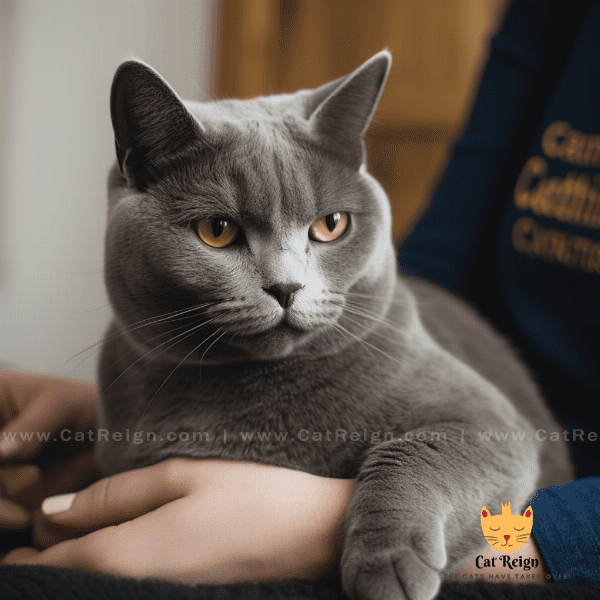
Chartreux Cats as Family Pets
Chartreux cats make wonderful family pets, thanks to their loving and gentle personalities.
Good with Children
Chartreux cats are known for their calm and patient demeanor, which makes them great companions for children. They enjoy snuggling and playing with kids, but also know when to retreat if they need a break.
Good with Other Pets
Chartreux cats can get along well with other pets in the household, including dogs and other cats. However, it’s important to introduce them gradually and provide plenty of supervision to ensure that everyone gets along.
Affectionate and Loyal
Chartreux cats are affectionate and loyal to their human companions, often forming strong bonds with their families. They enjoy spending time with their humans and will often follow them around the house.
Low Maintenance
While Chartreux cats do require regular grooming and exercise, they are generally low maintenance pets. They are not particularly vocal and are happy to entertain themselves if their humans are busy.
Indoor Cats
Chartreux cats are typically indoor cats, and providing them with a safe and stimulating environment is important for their health and well-being. However, they do enjoy supervised outdoor playtime and may even be trained to walk on a leash.
By providing a loving home and proper care, Chartreux cats can make wonderful family pets that bring joy and happiness to their humans’ lives.
